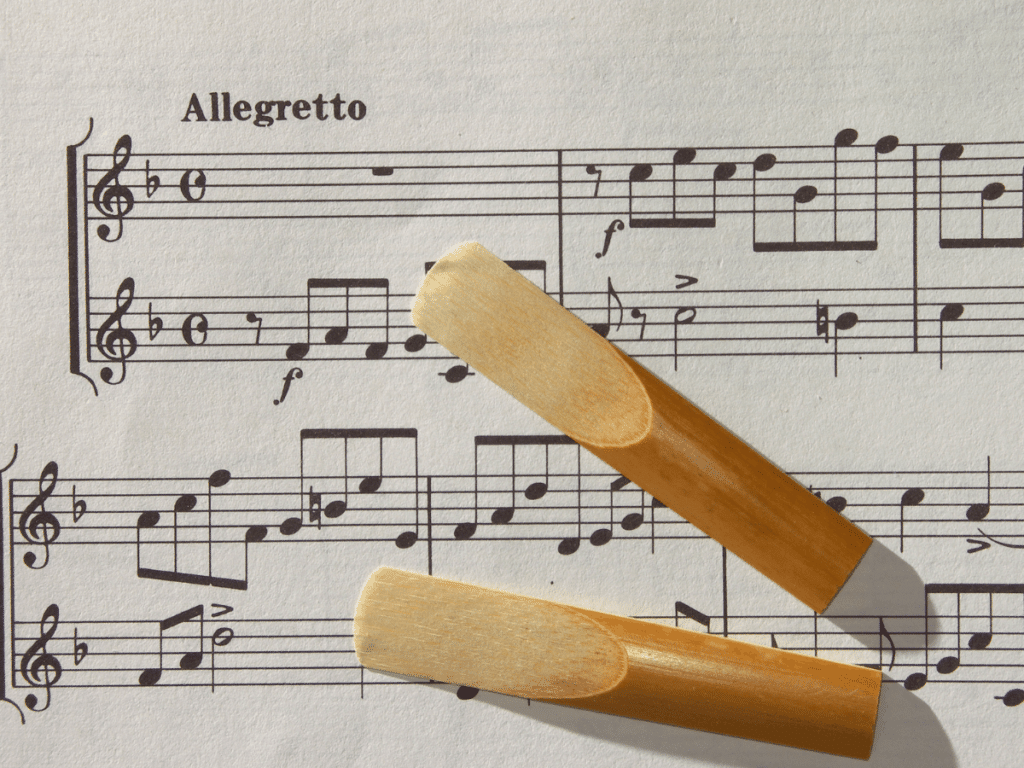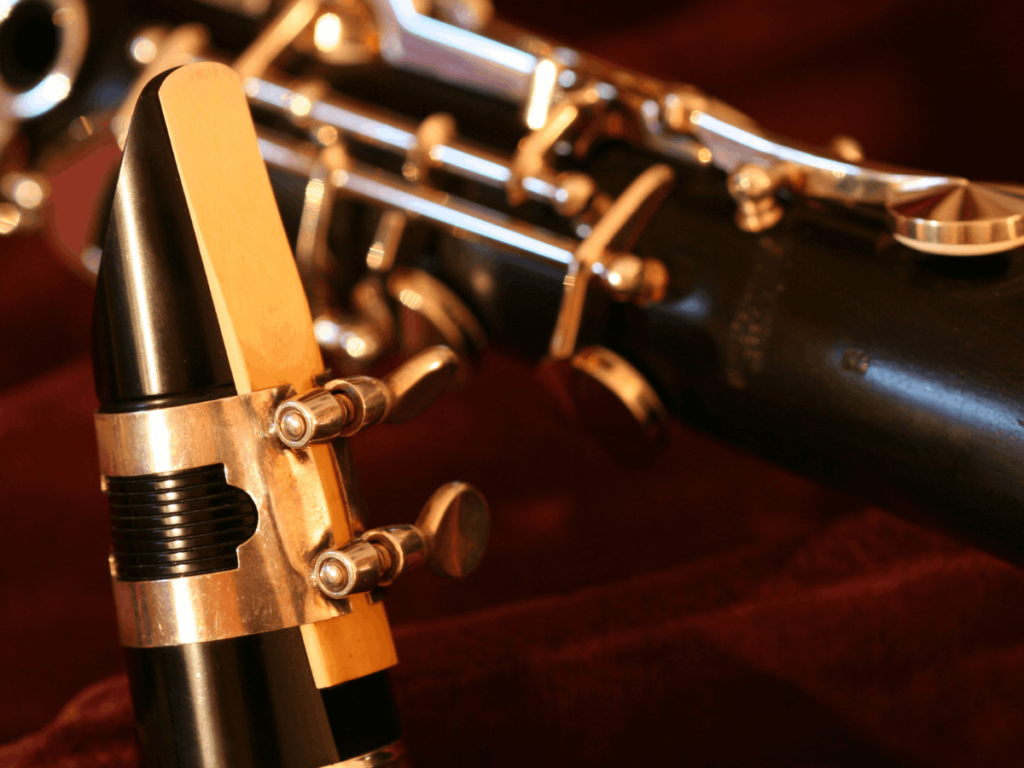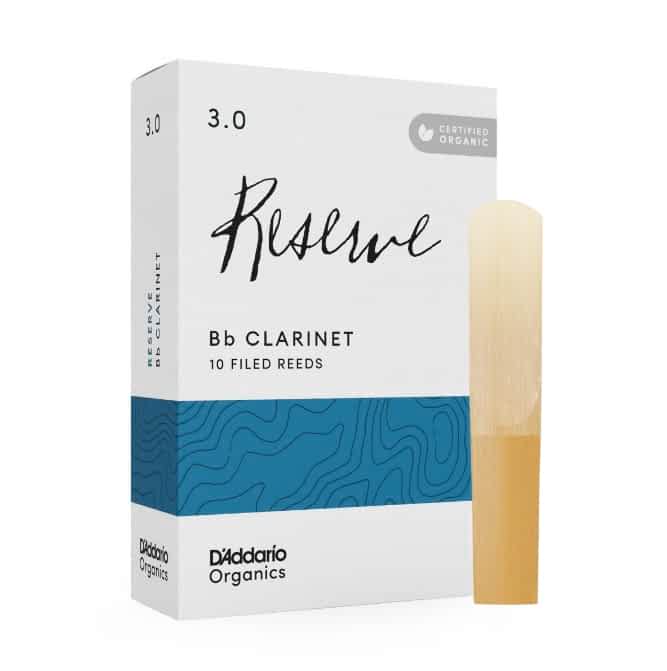The clarinet, with its distinctive voice, ranks among the most beloved woodwind instruments globally. Its charm dazzles in both classical melodies and rhythmic jazz tunes, capturing the hearts of countless fans.
But how will you make that fantastic sound if you don’t have the “perfect reed”?
If your reed isn’t working for you, your performance will likely suffer. That’s why it’s extremely important to understand how to choose a good reed for your clarinet.
Have you ever wondered why there are different strengths of clarinet reeds? Well, it all comes down to personal preference and the type of music you’ll be playing.
We’ve created the ultimate Clarinet Reed Strength Chart, so you can find out how to select the right strength based on your playing style.
We’ll also throw in a Clarinet Reed Comparison Chart to help you make an informed choice next time you buy a new reed.
Why Are There Different Clarinet Reed Strengths?

The strength of a reed is usually determined by the type of clarinet mouthpiece being used. This is because different mouthpieces require different types of reed strength.
Generally, the higher the number on the reed, the harder and stronger it is.
Using too soft or too hard of a reed can impact the sound quality, so it’s important to experiment with different reeds to find the perfect match for your specific instrument.
Choosing the correct clarinet reed strength to match your playing level is essential. Beginners are advised to start with softer or lower number reed sizes as they are more suitable for their playing level.
In contrast, professionals may opt for more rigid reeds to achieve greater flexibility and a stronger sound.
Therefore, it’s always necessary to buy the right reed strength for your specific needs.
How to Know if You're Reed Strength is Right?

Understanding the different clarinet reed strengths is essential in achieving the perfect sound. Reed strength can be indicated by a number on the packaging, with the standard scale running from 1 to 5.
Each clarinet player has a unique playing style and embouchure, which results in different reed strengths.
When choosing a reed strength, it’s important to listen to the sound of the reed and decide if it’s too hard or soft for your playing style.
Only move up to a higher strength reed if you’re overblowing too easily, or the reed isn’t providing enough resistance.
It’s important to test different reed types to find your favourite, as the brands and quality of the reed can also significantly affect the sound produced.
You can achieve the desired sound and improve your performance with proper attention to reed strength and selection.
Clarinet Reed Comparison Chart
The right reed strength is crucial for clarinet players since it significantly impacts sound and playability.
Choosing the right strength and cut of the reed is important for producing a good sound on the clarinet.
That’s where a clarinet reed comparison chart comes in handy. The chart shows the differences in reed strength against popular mouthpieces, and it’s available for both clarinet and saxophone reeds.
Reed comparison charts are available for different manufacturers since reed strength grading can vary among manufacturers.
This chart can help you identify which reed strength will work best for you, allowing you to experiment with different reed strengths and cuts to find the perfect match for your needs.
Clarinet Reeds We Recommend
Juno by Vandoren

COMES WITH: Full Package(Used for all genres of playing)
FEATURES:
Designed to produce a rich, clear sound quality
Juno by Vandouren
- Sold in multipacks of three or ten
- Come in half strengths, which is fantastic as the student progresses.
- There are cheaper options available.
When you click ‘Check Price’, you’ll see there are loads of great places to buy this item. Our personal favorite is Sweetwater for the US, and Thomann and Gear4Music for the UK & Europe.
They are the largest music retailers, with excellent customer service, competitive prices, really fast shipping, and the longest guarantees.
The professional musician who wrote this article combined many things,
from the product build, manufacturer’s reputation through to feedback
from other users, to create our famous TedScore™.
Vandoren Traditional Clarinet Reeds

FEATURES: Reliable and high-quality clarinet reed
OTHER INFO: Can be used with softer reeds while still maintaining a great tone across all registers
- Offer a deep, velvety sound that's sure to impress
- Available in half-size reed strength increments from 1 - 5
- Reliable and high-quality clarinet reed
- Favourite of so many clarinet players around the world
- individually wrapped to prevent warping and damage
- Higher price range compared to other counterparts
When you click ‘Check Price’, you’ll see there are loads of great places to buy this item. Our personal favorite is Sweetwater for the US, and Thomann and Gear4Music for the UK & Europe.
They are the largest music retailers, with excellent customer service, competitive prices, really fast shipping, and the longest guarantees.
The professional musician who wrote this article combined many things,
from the product build, manufacturer’s reputation through to feedback
from other users, to create our famous TedScore™.
D'Addario Organic Reserve Clarinet Reeds

FEATURES: Have a shorter vamp, which produces an even tone in all registers
OTHER INFO: With rounded tip corners for extra tonal warmth
- Designed with a traditional heel, which adds a centred sound to your playing
- Ideal for classical and jazz musicians
- A great choice for clarinet players looking for a rich, warm tone and exceptional performance
- Comes in individual packages made of recyclable materials
- Available in strengths 2 - 4.5 only
When you click ‘Check Price’, you’ll see there are loads of great places to buy this item. Our personal favorite is Sweetwater for the US, and Thomann and Gear4Music for the UK & Europe.
They are the largest music retailers, with excellent customer service, competitive prices, really fast shipping, and the longest guarantees.
The professional musician who wrote this article combined many things,
from the product build, manufacturer’s reputation through to feedback
from other users, to create our famous TedScore™.
Clarinet Reed Strength Chart
Summary
Choosing the right clarinet reed strength for your playing level and style is crucial to producing quality sounds and tones.
Your reed’s strength determines its density and flexibility, from soft single reeds ranging from 1.5 to 4, which are harder double reeds.
Most reed manufacturers produce reeds of different strengths, so make sure to take the time to select the one that fits your needs for the best playing experience possible.
We hope that this guide helped you in finding the right reed strength for your mouthpiece type to take you a step higher in your playing level!
What reed strength are you now on? We’d love to hear from you in the comments!
You can also visit our new article: A Complete Guide to Clarient Reed Sizes.
FAQ's
The reed strength you select will depend on your mouthpiece type, not your level of playing ability – as such, first-year musicians should typically use a 1.5 to 2.5 reed. Reed strength is measured by its density and flexibility, not size.
One sign of this is that high notes will be flat, or you may get a buzzy sound right out of the box. If this is the case, try moving the reed slightly higher up on the mouthpiece to improve tuning. Soft reeds can be more difficult to play in tune and may lead to “biting” while playing.












While the article provides a useful overview for beginners, it’s crucial to emphasize that the relationship between reed strength and mouthpiece type isn’t linear. Advanced players frequently experiment with various reed strengths in conjunction with different mouthpieces to achieve specific tonal qualities. It’s also worth mentioning that atmospheric conditions can significantly affect reed performance. Seasoned players will adjust reed choices based on these conditions to maintain consistent performance. Lucy’s article is a good starting point, but players should consider these additional factors as they advance.
Saw mention of Vandoren’s Juno reeds here, they any good for jazzy stuff? Been messing around on my old school clarinet & thinking of jazzing it up.
Absolutely, Terry! Juno reeds are pretty versatile. Give ’em a try for that smooth, jazzy sound.
I’ve played the clarinet for over a decade and the conversation around reed strength is always intriguing. It’s important to remind beginners and even seasoned players that while reed strength can influence playability and sound, personal preference and adaptability to one’s mouthpiece also play critical roles. I appreciated the reed comparison chart; it’s a useful tool for any clarinetist trying to navigate through the vast options available. Great job on the infographic, it simplifies the decision-making process.
Just got into playing the clarinet and figuring out reeds is like rocket science to me haha. Saw the part about starting with a 1.5 to 2.5 reed strength. Is that really the best range for total newbies like me or should I adjust based on how it feels? Cheers, Lucy for breaking it down.
Hey Cassie, sticking to that range is a great starting point. You’ll know when it’s time to go harder or softer based on your comfort and sound. Keep at it!